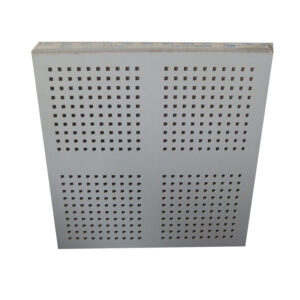Introduction
Acoustic ceilings have gained popularity in the construction industry for their ability to improve sound control and enhance the acoustics of a space. However, it is important to consider the installation and maintenance aspects of these ceilings before choosing them for a project. In this article, we will explore the ease of installation and maintenance of acoustic ceilings, providing valuable insights for architects, contractors, and building owners.
Installation Process
Acoustic ceilings are designed to be relatively easy to install compared to other ceiling types. The installation process involves the following steps:
a. Planning and Preparation: Before installation, proper planning is essential. This includes assessing the ceiling layout, determining the placement of lighting fixtures, HVAC systems, and other elements. The necessary measurements are taken to ensure accurate installation.
b. Framework Installation: A metal grid framework is typically installed first, consisting of main runners and cross tees. This framework provides the support structure for the acoustic ceiling panels.
c. Panel Installation: The acoustic ceiling panels are then placed into the grid system, securely fitting into the designated spaces. Panels can be easily trimmed or adjusted to accommodate any irregularities or obstructions in the ceiling.
d. Finishing Touches: Once the panels are installed, the final touches, such as applying edge trims or moldings, are done to achieve a clean and polished appearance.
Overall, the installation process of acoustic ceilings is straightforward, and with proper planning and the right expertise, it can be completed efficiently.
Maintenance Requirements
Acoustic ceilings are designed to be low-maintenance, making them a practical choice for various applications. Here are some key points regarding maintenance:
a. Cleaning: Regular cleaning of acoustic ceilings is relatively simple. Dust and debris can be removed using a soft brush or vacuum cleaner with a brush attachment. For more stubborn stains, mild detergents or specialized cleaning solutions recommended by the manufacturer can be used. It is important to follow the manufacturer’s guidelines to avoid damaging the ceiling panels.
b. Repairs and Replacements: In the event of damage to individual panels, they can be easily replaced without having to dismantle the entire ceiling system. This makes maintenance and repairs cost-effective and convenient. It is advisable to keep a stock of spare panels to ensure a seamless replacement process.
c. Periodic Inspections: Periodic inspections should be conducted to check for any signs of wear, damage, or potential issues. This allows for timely maintenance and repairs, ensuring the longevity and performance of the acoustic ceiling system.
d. Manufacturer’s Recommendations: Following the manufacturer’s guidelines for maintenance is crucial. They can provide specific instructions on cleaning methods, recommended cleaning agents, and any limitations or precautions to be observed.
Conclusion
Acoustic ceilings are generally easy to install and maintain, offering a hassle-free solution for sound control in buildings. The installation process involves proper planning, framework installation, panel fitting, and finishing touches. Maintenance requirements include regular cleaning, repairs or replacements when needed, periodic inspections, and adherence to the manufacturer’s recommendations. By considering the ease of installation and maintenance, architects, contractors, and building owners can make informed decisions when selecting acoustic ceilings, ensuring long-term functionality and aesthetics for their spaces.



